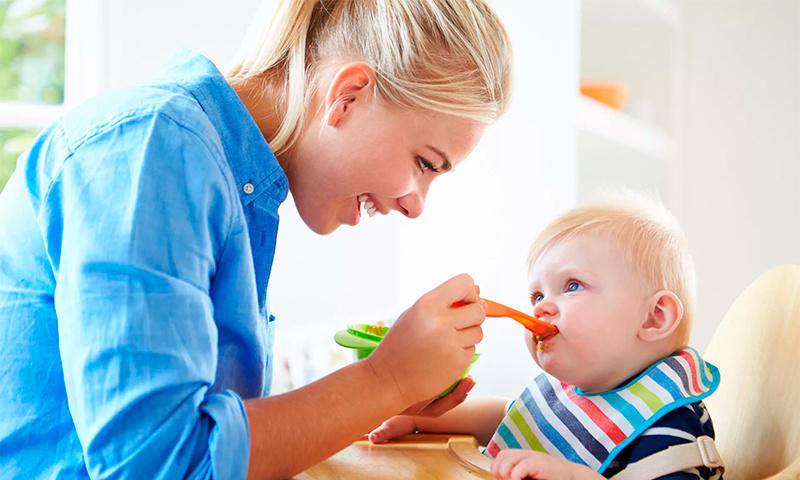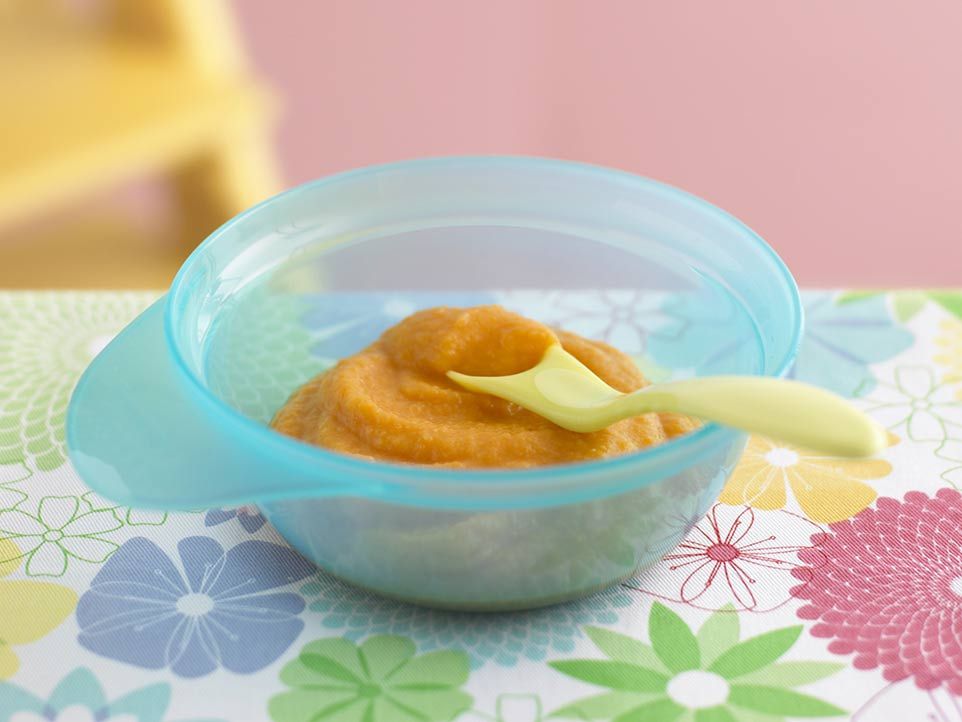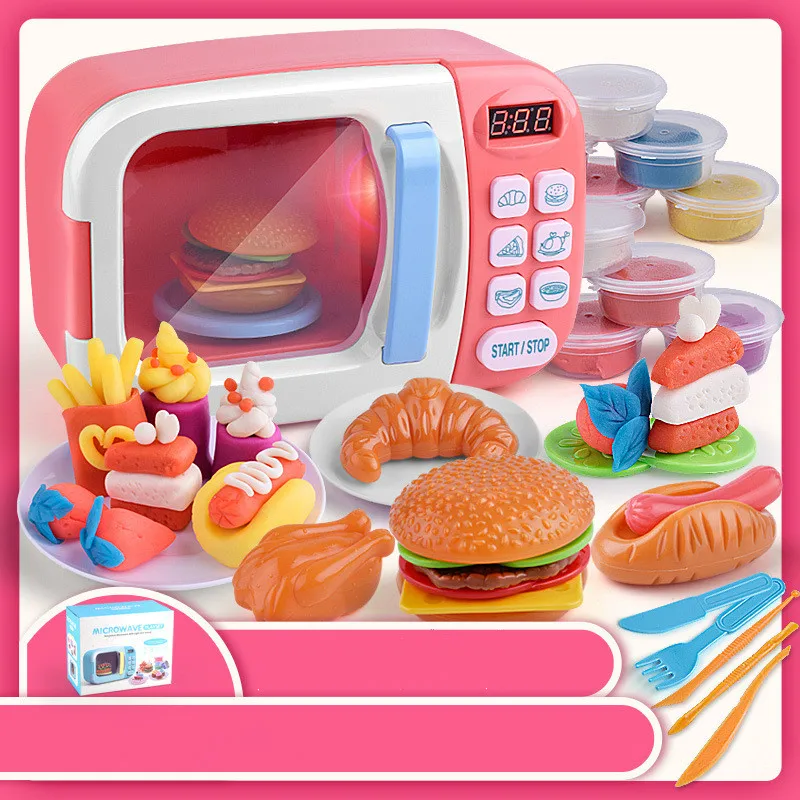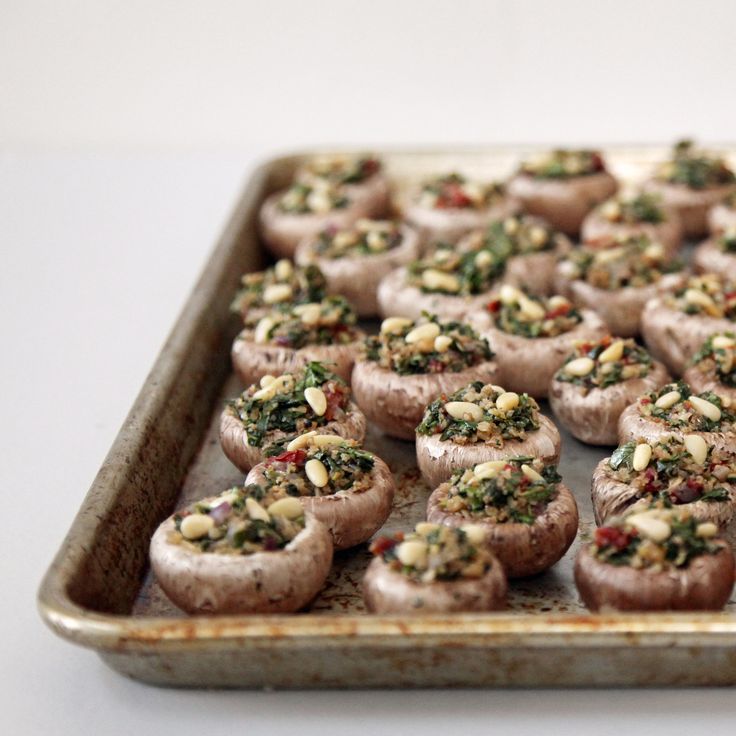Foods for 16 month old baby
Top 10 Ideas For 16 Months Baby Food
Nutritious cereals, fruits, and vegetables are needed to support your growing baby.
Image : Shutterstock
Most first-time moms are unsettled about their little one’s eating patterns. Having a 16-month-old baby fuss around with food frequently could leave you agitated. Introducing new foodstuffs by experimenting with food ideas for 16 months babies could be a great way to feed them nutritious and delicious food. At 16 months, your baby is rapidly growing, and their energy levels are soaring. However, with their intuitive minds driving them to explore their surroundings, it is not easy to have them sit calmly and finish their meals. Hence, it may be challenging for parents to maintain a balanced diet. Read on as we share some food ideas to help you feed your 16-month-old.
1. Grains:
From pasta to brown bread, there are a whole lot of grain choices to include in your baby’s meal plans. Whole grain muffins will make quick breakfast and snack option for your baby. You can also sneak in extra fruits while preparing muffins. Cut out sandwich with a pastry or cookie cutter in interesting shapes to make it more appealing. Animals, stars, dinosaurs, and hearts are all fun options.
2. Milk:
After your baby’s first birthday, you can continue breastfeeding him if you want. Or you can introduce him to cow’s milk. But give the milk in a cup, not a bottle. You don’t need to give him formula milk. Give your child a minimum of 350 to 400 ml milk every day. Milk does play an important role in your baby’s growth, but don’t give him more than the required amount. It may reduce his appetite for solid foods. It is better if he obtains all the nutrients from a varied diet. The best 16 months baby foods are excellent to feed. It’s essential that they get vitamin D and calcium in their daily diet. You may consult your pediatrician to know about the dairy milk alternatives.
3. Yogurt:
If your baby does not like milk, then you can offer him some yogurt. Three servings of yogurt a day are enough for the development of a 16-month-old baby. Mix yogurt with his favorite fruit puree to serve as a delicious snack.
Three servings of yogurt a day are enough for the development of a 16-month-old baby. Mix yogurt with his favorite fruit puree to serve as a delicious snack.
4. Fruits:
The different hues, aromas, textures, tastes, shapes and sizes of fruits are sure to appeal to your toddler. So serve him a new fruit every day to tantalize his taste buds in a healthy way. You can offer him the goodness of seasonal fruits.
5. Poultry:
Almost, 15% kids under three years of age do not get enough iron. Hence, it is important to include iron-rich foods in your baby’s diet. Poultry is an excellent source of iron and is a sure shot hit among children. Go ahead and explore some chicken recipes that will make your toddler drool.
6. Vegetables:
Veggies are an essential source of vitamins, minerals, and dietary fiber. Adding vegetables to your baby’s diet will work wonders for his immunity and protect him from various infections and illnesses.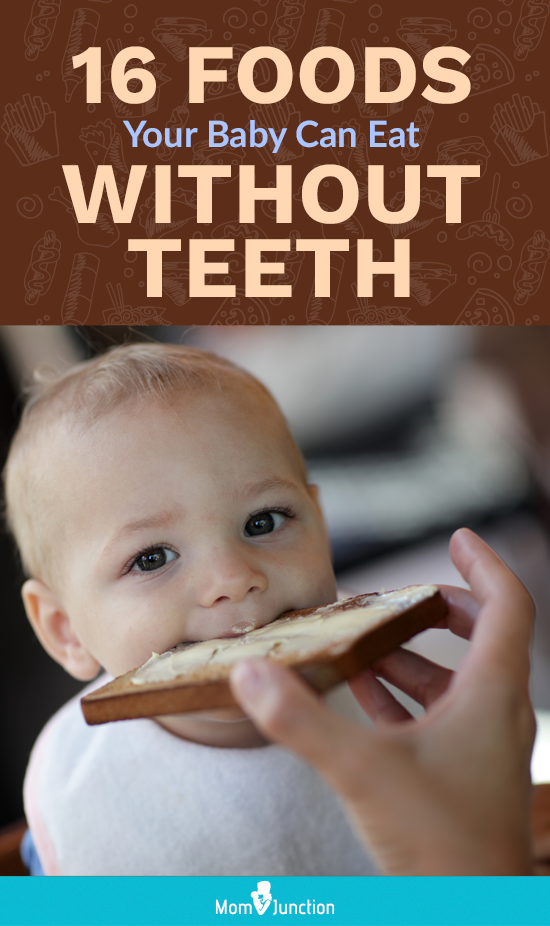 You can also prepare vegetable stock and add it to the different baby foods you prepare for your little one.
You can also prepare vegetable stock and add it to the different baby foods you prepare for your little one.
7. Beans And Legumes:
Beans and Legumes are a rich source of protein, iron, dietary fiber, and B vitamins. You can serve your toddler baked beans for breakfast or lentil soup at dinner.
8. Eggs:
Eggs are a powerhouse of proteins and other essential nutrients. You can serve this versatile food in various forms like hard-boiled eggs or egg scramble. Eggs are so healthy and yummy that you would want them to be a part of your toddler’s diet for years to come. Eggs can give so many 16 month old baby food recipes.
9. Fish:
Your baby’s brain needs essential fats like EPA and omega three fatty acids to develop well. These healthy fats come mainly from fish. So at this stage, you must make fish an important part of your baby’s diet. Choose fishes that contain minimal mercury like Herring, Atlantic mackerel and salmon for your baby.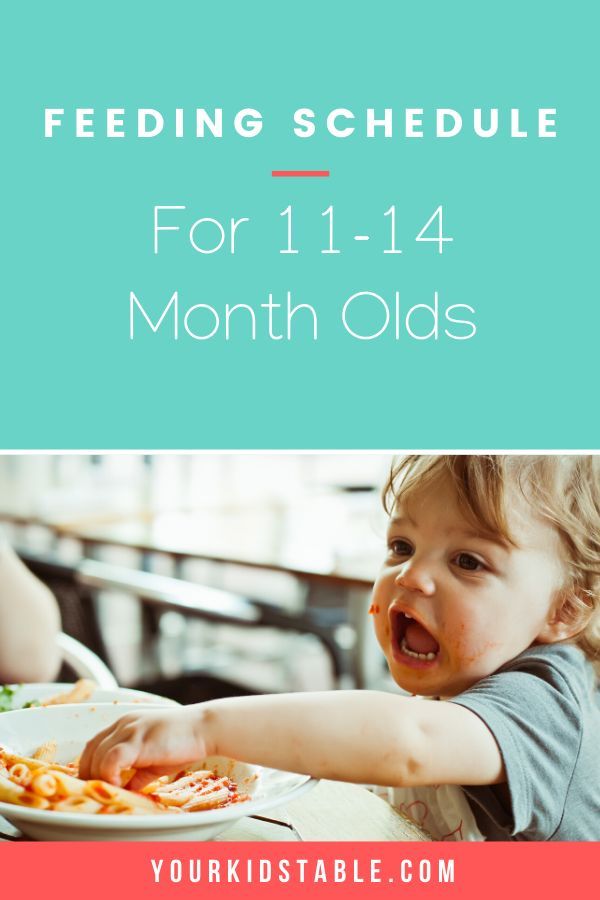 Remember to remove all the tiny bones while feeding your baby.
Remember to remove all the tiny bones while feeding your baby.
10. Porridge:
Porridge will make a highly nutritious breakfast for your baby. It is an excellent source of nutrients like carbohydrates, proteins, and dietary fiber. Moreover, it will keep his little tummy full for a couple of hours and keep crankiness at bay.
1. How do I get my 16-month-old to eat?
Make mealtimes healthy; involve your toddler in meal preparation; avoid punishing them if they refuse to eat; do not bribe them with treats for healthy food; serve them variety; feed them family food; let them explore the food on the plate with their hands; and follow their lead to help your child eat more (1).
2. How much food should I feed my 16-month-old baby?
The following table explains the average daily intake requirement for a toddler (2).
| Food group | Servings per day | One serving equals |
| Grains | 6 | Bread (¼ to ½ slice), cooked rice or pasta (4 tablespoons), dry cereals (¼ cup), crackers (1 or 2) |
| Vegetables | 2 to 3 | Cooked veggies (1 tablespoon for each year of age) |
| Fruits | 2 to 3 | Cooked fruit (¼ cup), fresh fruit (½ piece) and fresh juice (¼ to ½ cup) |
| Dairy | 2 to 3 | Milk(½ cup), cheese (1-inch cube), yogurt(½ cup) |
| Protein( tofu, egg, fish, meat, poultry) | 2 | 1 oz of meat and ½ egg(yolk and white) |
| Legumes | 2 | Soaked and cooked (⅛ cup) |
3. What foods should toddlers not eat?
What foods should toddlers not eat?
Avoid giving slippery foods such as candy, cough drops, grapes, and large pieces of meat, small and hard foods, such as seeds, nuts, popcorn, raisins, raw carrots, and other sticky foods such as marshmallows and peanut butter to your toddlers. While some foods may cause choking hazards, others might trigger allergies (3).
4. How much milk should my 16-month-old drink?
Your toddler should get about 16 to 24 ounces of full-fat milk daily (4).
These energy and nutrient-dense 16-month-baby food ideas could help you add different flavors, vitamins, and minerals to your baby’s diet. Incorporate various grains, dairy products, eggs, fruits, and vegetables into your baby’s meals for a balanced diet. Try giving them whole grains or boiled eggs for breakfast or snack time, or make a wholesome meal with various veggies for lunch and dinner. You may try customizing the recipes as per your toddler’s age and taste preferences. However, it is wise to seek a pediatrician’s advice before adding a new food variety to your tot’s diet.
References:
MomJunction's articles are written after analyzing the research works of expert authors and institutions. Our references consist of resources established by authorities in their respective fields. You can learn more about the authenticity of the information we present in our editorial policy.
- Toddler not eating? Ideas and tips
https://raisingchildren.net.au/toddlers/nutrition-fitness/common-concerns/toddler-not-eating - Serving Sizes for Toddlers
https://www.healthychildren.org/English/ages-stages/toddler/nutrition/Pages/Serving-Sizes-for-Toddlers.aspx - Feeding Your Toddler – Ages 1 to 3 Years
https://my.clevelandclinic.org/health/articles/13400-feeding-your-toddler—ages-1-to-3-years - Feeding Your Baby and Toddler (Birth to Age Two)
https://www.mottchildren.org/posts/your-child/feeding-your-baby-toddler#:~:text=Your%20toddler%20should%20get%2016enough%20nutrients%20from%20other%20foods.
The following two tabs change content below.
- Reviewer
- Author
Jessica Albert is a passionate writer who seeks to connect with her readers through wit and charm. Her work aims to invoke curiosity and keep the readers engaged through and through. She has prior experience working with magazines and e-commerce establishments as a content marketer and editor. Being a mother herself, she puts all her knowledge into creating content about... more
Dr. Misha Yajnik is an American Board Certified general pediatrician practicing in the US. She did her undergraduate studies at Youngstown State University in Ohio and obtained her MD degree from Ross University School of Medicine in Dominica. With over a decade of experience with children from newborns to adolescents, her special interest lies in helping parents navigate the difficulties... more
Pizza during pregnancy: Ways to eat it..
Pizza during pregnancy: Ways to eat it.
 .
.Can You Mix Breastmilk And Formula?..
Can You Mix Breastmilk And Formula?..
Is It Safe To Eat Lotus Seeds (Makhana)..
Is It Safe To Eat Lotus Seeds (Makhana)..
Dry Fruits During Pregnancy: Benefits,..
Dry Fruits During Pregnancy: Benefits,..
Spinach For Babies: Right Age, Benefits..
Spinach For Babies: Right Age, Benefits..
Cinnamon For Babies: Safety, Benefits..
Cinnamon For Babies: Safety, Benefits..
Is It Safe To Consume Cinnamon During..
Is It Safe To Consume Cinnamon During..
4 Possible Health Benefits Of..
4 Possible Health Benefits Of..
ORS for Babies: Dosage, Benefits And..
ORS for Babies: Dosage, Benefits And..
Recipes, Food Ideas & Tips
At FirstCry Parenting, our aim is to give you the most elevant, accurate and up to date information.
Every article that we publish, confirms to stringent guidelines & involves several levels of reviews, both from our Editorial team & Experts. We welcome your suggestions in making this platform more useful for all our users. Write in to us at [email protected]
- What to Feed a 16-Month-Old
- How Much Should a 16-Month-Old Eat?
- Feeding Schedule for a 16-Month-Old
- Foods to Avoid for a 16-Month-Old Toddler
- Food Recipes for a 16-Months-Old Toddler
- Feeding Tips for Parents
Last Updated on
Mothers, especially first-time moms, tend to get jittery when it comes to deciding what to feed their babies. If you have a 16-month-old toddler, who relishes an apple one day and refuses to eat it the next day, you are bound to get frustrated. The trick is to introduce new foods to your toddler so that she doesn’t get bored of eating the same food. Keep her diet balanced and introduce her to new tastes and food textures. If you want to know what foods you can give to a 16-month-old toddler and what kind of feeding schedule you should follow for him, then read this article. We also have some meal ideas for 16-month-old babies, which you experiment with for your little one.
The trick is to introduce new foods to your toddler so that she doesn’t get bored of eating the same food. Keep her diet balanced and introduce her to new tastes and food textures. If you want to know what foods you can give to a 16-month-old toddler and what kind of feeding schedule you should follow for him, then read this article. We also have some meal ideas for 16-month-old babies, which you experiment with for your little one.
What to Feed a 16-Month-Old
A toddler must have a balanced meal each day. A healthy diet that consists of all the essential nutrients is a must for toddlers for their healthy growth and development. So here is a list of food that can be given to your 16-month-old baby.
1. Fruits and Vegetables
- Apples
- Banana (healthy for weight gain, contains vital nutrients)
- Orange (rich in vitamin c)
- Grapes
- Potatoes
- Broccoli
- Carrots
2. Non-Vegetarian
- Chicken (shredded and boiled)
- Fish
- Eggs
3.
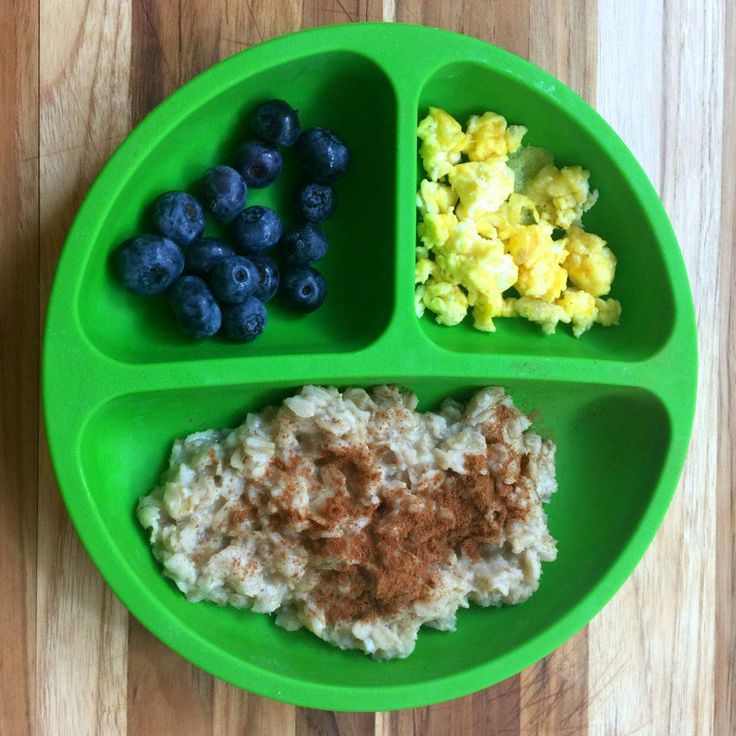 Other Food Items
Other Food Items- Rice (boiled)
- Oats
- Milk
- Yoghurt
- Kidney beans (boiled and mashed)
- Legumes
- Whole wheat
- Mashed fruits and vegetables
How Much Should a 16-Month-Old Eat?
At 16 months, a toddler knows quite well what she wants to eat and what she never wants to put in her mouth. Hence, forcing your baby to eat something won’t do any good. But as per the nutritional food chart, you must make sure that she gets about 1000 calories approximately per day. Another good way of knowing how many calories to give to your baby is to add up to 40 calories for every inch of her height.
Feeding Schedule for a 16-Month-Old
Here is a sample feeding schedule for a 16-month-old. We have given some foods that you can include in their meals. Feel free to include other healthy foods in her diet
| Meal Time | Food Name |
| Breakfast (8:00 am – 8:30 am) | Scrambled eggs, oatmeal |
| Lunch (11:30 am -12:00 noon) | Fruits or vegetables, pasta |
| After Nap (3:00 pm -3:30 pm) | Yoghurt, cheese sticks |
| Dinner (6:30 pm -7:00 pm) | Steamed broccoli, chicken |
Drinking milk along with every meal/snack is important for a 16-month-old toddler. As it will fill her stomach and she won’t ask for unhealthy snacks in between meals. Therefore, giving milk along with every meal to your little one will develop a healthy and good appetite cycle. But how much milk should a toddler take every day? According to paediatricians, a toddler should take 3-4 ounces of milk with every meal or 5-6 ounces of milk along with three main meals.
As it will fill her stomach and she won’t ask for unhealthy snacks in between meals. Therefore, giving milk along with every meal to your little one will develop a healthy and good appetite cycle. But how much milk should a toddler take every day? According to paediatricians, a toddler should take 3-4 ounces of milk with every meal or 5-6 ounces of milk along with three main meals.
Foods to Avoid for a 16-Month-Old Toddler
Listed below are foods that you should not include in your 16-month-old’s food chart.
- Low-fat milk
- Raw vegetables
- Peanuts
- Prawn
- Mutton or beef
- Fish with bones
Food Recipes for a 16-Months-Old Toddler
Cooking something that is nutritious as well as tasty can be quite challenging for parents. To help you with that, here are three food recipes that you can make for your 16-month-old toddler.
1. Green Veggie Fritter
Filled with the goodness of spinach and sweet corn, the tasty green veggie fritter makes for healthy and nutritious finger food for your little one.
Ingredients
- Sweet corn (unsalted) – 1 can
- Spinach (baby leaves) – 5 – 6 no.
- Garlic (crushed) – 1 clove
- Spring onion (chopped) – 1
- Flour (plain) – 50 g
- Baking powder – ½ tsp
- Egg (optional) – 1
- Milk – 50 ml
- Vegetable oil
How to Make
- Take sweet corn, blanched spinach leaves, garlic, chopped spring onion in the food processor and pulse them until done.
- Take the flour in a bowl and add the mix to it. Followed by baking powder and milk. Whisk in the egg and mix well. You will get a thick batter.
- In a pan, heat some vegetable oil.
- Once the oil is hot, drop spoonfuls of batter in it.
- Cook for about a minute or two then flip.
- Press the fritters with the spatula to cook it well. Once they turn light golden, transfer them on to a plate lined with tissue. Let the tissue absorb the excess oil.
- Serve warm.

2. Mini Chicken Shepherd’s Pie
The shepherd’s pie is a great recipe for your little one as it will provide your baby with the much-needed protein required for his healthy growth and development.
Ingredients
- Chicken mince (with some fat) – 100 g
- Chicken stock (low salt) – 150 ml
- Lentils (rinsed and soaked in water) – 25 g
- Onion (finely chopped) – 2 tbsp
- Garlic (crushed) – 1 clove
- Tomato puree – 1 tbsp
- Celery stick (diced) – 2 tbsp
- Yellow pepper (diced) – 3-4 tbsp
- Potato – 300 g
- Courgette (diced) – 3 – 4 tbsp
- Carrot (diced) – 1 cup
- Milk – 25 ml
- Cumin – 1/4th tsp
- Cheddar cheese (grated) – 150 g
- Butter – 25 g
- Vegetable oil – 1 tbsp
How to Make
- Heat some vegetable oil in a saucepan.
- Add in the chopped onions and fry them until cooked properly.

- Then add the carrot, celery, pepper, garlic, and cumin.
- Stir then allow the vegetables to cook for 2-3 minutes.
- Add the chicken mince and mix it well with the vegetables.
- After some time, add the courgette and tomato puree. Allow it to cook for a few minutes.
- Then add the soaked lentils, pour in the chicken stock and put a lid.
- Allow it to simmer in low heat for 35-40 minutes.
- Keep stirring it from time to time.
- Boil the potatoes until they are well cooked.
- Peel the potatoes and mash them with milk and butter.
- Once the chicken mince and vegetable mix are cooked, pour it in a blender and make a fine puree.
- Pour the puree into the ramekins and top it with mashed potatoes and grated cheddar cheese.
- Bake it for 30 minutes until the top becomes golden and starts bubbling at the sides.
- Allow it to cool before serving it to your little one.
3. Apple and Carrot Oatmeal Cookies
Packed with the goodness of apple, carrot, and oatmeal, this apple and carrot oatmeal cookie is one of the healthiest snack ideas for toddlers.
Ingredients
- Flour – 1 cup
- Oats – 1 cup
- Carrot (grated) – ½ cup
- Apples (grated) – ½ cup
- Raisins (finely chopped)
- Sunflower seeds (roughly crushed) – 1/4th cup
- Cinnamon powder – ½ tsp
- Water
How to Make
- In a bowl, take the flour and add the oats, grated apple and carrot, and raisins to it.
- Add in the sunflower seeds and cinnamon powder. Slowly add water to knead a dough.
- Flatten the dough using a rolling pin and cut out circular shapes using a cookie cutter.
- Line a baking tray with parchment paper and place the cookies on it.
- Bake for 10-12 minutes at a temperature of 350 degrees Fahrenheit.
Feeding Tips for Parents
Here are some tips that you must follow when feeding your toddler.
- Cut fruits and vegetables into small pieces of not more than half an inch before being giving it to your toddler.

- Remove the seeds and pits in the fruits before giving them to your baby.
- Toddlers should be given nuts after breaking them into small pieces.
- Avoid giving fruits and vegetables that are cut into very small pieces or your baby might choke on them.
- Hard foods like popcorns, potato chips or candies should not be given since as they could prove to be a choking hazard.
- Chewing gum, sticky jellies, dried fruits, and marshmallows can get caught in your baby’s throat and therefore, it is best to avoid them.
- Nut butter if taken in dollops can be difficult to swallow for babies. Therefore, always give nut butter to your baby by spreading a thin layer on a cracker or a slice of bread. Another way is to mix them in yoghurt or apple sauce before serving them to your baby.
Treat your baby to the above-given recipes and make a sample meal plan keeping in mind the foods that should be avoided. In no time you will see your little one enjoying every meal!
Also Read:
Starters Guide on Baby Food and Nutrition
DIY Baby Food Recipes
Best Baby Foods You Should Give To Your Kid
ADVERTISEMENT
POPULAR POSTS
ADVERTISEMENT
LATEST
What Do Breastfeeding Moms Really Want?
Ruchelle Fernandes -
Hands up if you thought breastfeeding would be easy – but then struggled! To mark World Breastfeeding Week in August this year, Australian breastfeeding. ..
..
Compiling a menu for a baby after a year. What to feed a child after a year: advice to parents
Young parents who have a baby after a year often have questions - what to feed the child next?
Content:
- Is a nutritionist a mother?
- Feeding a child per year: age specifics of nutrition
- Sample children's menu for a day
- Children's menu for a week. Option one
- Menu for the week. Option two
Young parents who have a baby after a year old often have questions - what to feed the child next? Nutrition guides are full of complementary feeding schemes, but less attention is paid to the nutrition of one-year-old and two-year-old children. But after all, mom and dad need not only to know the principles of nutrition for the crumbs, but also to correctly compose his menu for the day, week or even month! It is necessary to plan the purchase of products, methods of preparation and even preparations for the future.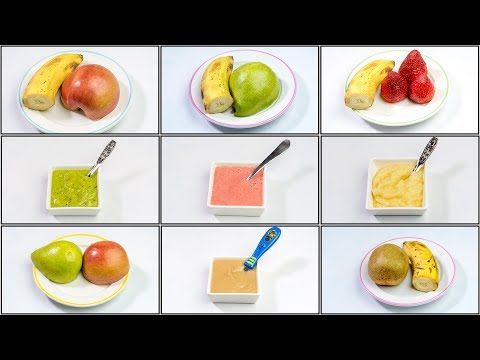 Let's pay close attention to the menu of the crumbs from a year to about two years.
Let's pay close attention to the menu of the crumbs from a year to about two years.
Important note: the recommendations of this article can only be fully applied to children whose mothers adhered to the pediatric complementary feeding regimen and gradually replaced feedings (often with formula, but sometimes with breasts) with certain volumes of "adult" food. Babies who are breastfed on demand are more suitable for pedagogical complementary foods, which are gaining more and more supporters. These children may not be able to handle the given portion sizes - however, their mothers may well adopt the recipes and general recommendations of this article.
Nutritionist - mother?
The principles of baby food for a child of 12 months remain the same as in the second half of the first year - a gradual expansion of the set of products and a gradual change in the degree of grinding and processing of the product.
For the proper organization of nutrition for your baby, it is worth considering and compiling an indicative menu for 7-10 days in advance. At first glance, this seems complicated - but let's try, using certain knowledge about products and their daily needs, to create approximate layouts.
At first glance, this seems complicated - but let's try, using certain knowledge about products and their daily needs, to create approximate layouts.
When compiling the menu, you need to take into account the norms of daily consumption of products - that is, which products must be given to the baby every day, and which ones - with a certain frequency. For simplicity, we will make a calculation for a week - therefore, we will distribute the products by day. Daily products are calculated based on the daily allowance, multiplying it by 7 days of the week, the rest - based on the number of doses.
Every day the baby receives milk and dairy products, butter, bread, vegetables, cereals, on some days of the week they distribute, for example, cottage cheese, cheese, fish, sour cream, eggs. Meat and fish are recommended to be given at least 5-6 times a week - that is, 4 times meat and 1-2 times fish.
Sometimes it happens that it is not possible to cook all the products planned in the menu. Then you have to resort to replacing the product with an approximately equivalent one. When replacing, it is necessary to take into account the calorie content and nutritional value of the product - that is, replace carbohydrate foods with them, fats with other fats, proteins with other proteins. For example, interchangeable carbohydrates are bread, bakery products, pasta, cereals. From proteins, milk, cottage cheese, meat, fish, cheese are replaceable. From vegetables - potatoes, beets, cabbage, carrots, etc. Fats are replaceable both vegetable and animal. However, by the end of the week, all quantities of replaced products are equalized.
Then you have to resort to replacing the product with an approximately equivalent one. When replacing, it is necessary to take into account the calorie content and nutritional value of the product - that is, replace carbohydrate foods with them, fats with other fats, proteins with other proteins. For example, interchangeable carbohydrates are bread, bakery products, pasta, cereals. From proteins, milk, cottage cheese, meat, fish, cheese are replaceable. From vegetables - potatoes, beets, cabbage, carrots, etc. Fats are replaceable both vegetable and animal. However, by the end of the week, all quantities of replaced products are equalized.
Mandatory and indispensable in the baby's diet should be daily milk, butter, vegetables, bakery products, other products can be varied by day of the week.
In addition, when planning a baby’s menu, it is worth remembering to take into account boiling and loss of the product, take their volumes taking into account cooking - for example, fish loses up to 40% of weight during cooking, meat - up to 30%, vegetables lose up to 35% during processing % of its raw weight.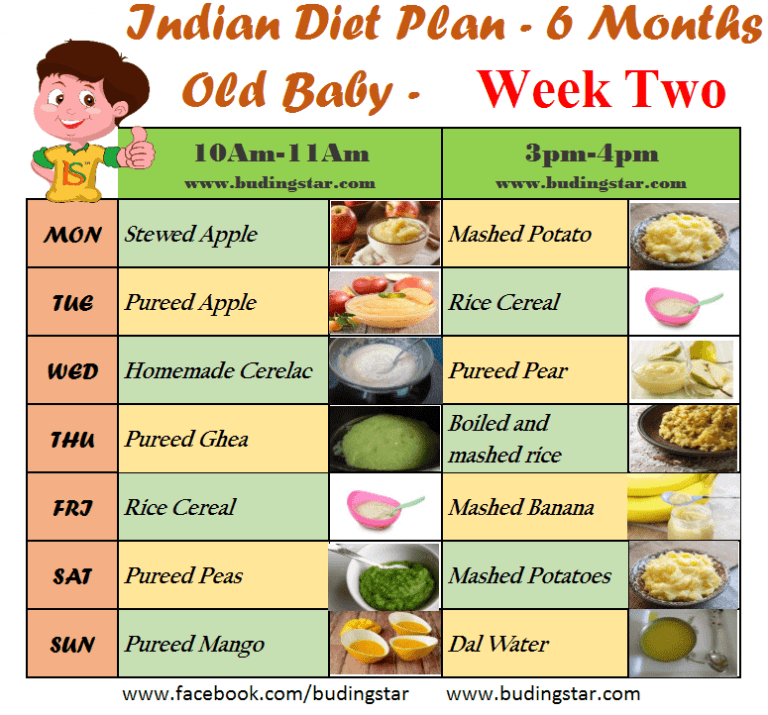
Feeding a child per year: age specifics of nutrition
In the first months of the second year of life, the main components of food are pureed or mashed with a fork puree and cereals. But the degree of their grinding should gradually change - from the beginning of the second year, you can switch to highly boiled and diluted and boiled with milk porridge, side dishes from heavily boiled vegetables or cereals - buckwheat, rice, wheat, corn or millet. Closer to one and a half years, with the appearance of 8-10 or more teeth, it is necessary to start giving more dense food - steam cutlets, meatballs, dark bread.
In addition, it must be remembered that up to a year and a half, the acidity of gastric juice is still insufficient, and therefore delicate proteins, mainly milk proteins, should prevail in the diet. It is advisable not to use confectionery and sugar in the diet of children under 2-3 years old, however, you can give dry cookies, homemade jams, marmalade, jams and honey from about a year and a half if there is no allergy.
5 or 4 meals of 200-225 ml each are considered optimal.
There are certain rules to follow when feeding babies:
- for breakfast you can have a variety of cereals, vegetables, eggs, cottage cheese, meat, fish. From liquid dishes - milk, weak tea, herbal teas, fruit drinks;
- lunch should consist of any kind of soup - meat or vegetable, second course - meat, fish or vegetable with a side dish and sweet - juices, fruits, compotes, mousses, soufflé;
- closer to a year and a half, a light snack is recommended before the first course - salad;
- for an afternoon snack, preferably a liquid, milky, sour dish with cookies and fruit is better;
- maximum protein in the first half of the day - breakfast and lunch;
- dinner is built on the principle of breakfast;
- it is obligatory to have a hot dish at each feeding;
- after eating, the baby should drink.

Sample children's menu for a day
Here are menu options developed by various doctors and nutrition guides. You can use one of them or create your own menu based on the standard ones.
For example, pediatrician Ezhova N.V. in his guide "Nutrition for children from birth to three years" offers the following menu options for the day (with some additions and changes by the author of the article).
For ages 1 year - 1 year 3 months
Breakfast
Porridge of various types of cereals - 150 g
Tea with milk or milk - 100 ml
Bread with butter - 30 g + 3 g
Lunch
Vegetable or meat soup - 100 g
Meat puree or cutlet — 40 g
Garnish (vegetable, pasta, cereal) — 50 g
Compote or fruit juice - 100 ml
Snack
Cottage cheese - 30 g
Kefir or milk - 150 g
Bun or biscuit - 10 g
Fruit - 50 g
Dinner
Vegetable puree or porridge - 150 g
Tea with milk - 50 ml
Second dinner (can be replaced with second breakfast if desired)
Kefir, milk, biolact, baby yoghurt (optional) — 150 ml
Age 1 year 3 months — 1 year 6 months
Breakfast
7 — 9004 Tea with milk or milk - 150 mlBread with butter - 40 g + 5 g
Lunch
Vegetable salad - 10 g
Soup — 100 ml
Meat cutlet (fish, liver, chicken) - 50 g
Garnish (vegetable, cereal, vermicelli) - 80 g
Compote (fruit drink, fruit juice) — 100 ml
Snack
Cottage cheese — 50 g
Fruit — 100 g
Tea with biscuits 150 g + 10 g
Dinner
Vegetable puree or porridge - 150 g
Tea with milk — 150 ml
For age 1 year 6 months — 1 year 9 months
Breakfast
Grated carrot (fruit salad, half an egg) — 30 g 9008 Milk porridge - 150 g
Tea with milk or milk - 150 g
Bread with butter 60 g + 5 g
Lunch
Vegetable salad - 40 g
Soup (shchi, borscht) — 100 g
Meat puree or cutlet — 60 g
Garnish (vegetable, cereal) — 100 g
Fruit juice - 100 ml
Afternoon snack
Kefir with a bun - 200 g
Fruit 100 g
Dinner
Vegetable puree or porridge - 200 g
Milk (kefir, yogurt) - 150 g
For the age of 1 year 9 months - 2 years
Breakfast
Milk porridge (noodles, vermicelli) - 150 g
Coffee, not natural, or tea with milk, or milk - 150 g
Roll with butter, jam or cheese 70 + 3 g
Lunch
Vegetable salad - fresh, pickled - 30-40 g
Soup, cabbage soup or borsch — 50-100 g
Meat or fish cutlet — 50 g
Garnish (vegetable, cereal) 100 g
Compote — 150 g
Afternoon snack
Kefir with cookies - 150 g
Fruit - 50 g
Dinner
Vegetable dish - 150 g
Kissel or milk - 100 g
As you can see, the menu is not without flaws. Here are approximate servings and volumes, it can only be used as a general guide. Based on it, taking as a basis an approximate layout menu from the pediatrician's reference book (District pediatrician. Reference guide. - Phoenix, 2008) and making practical adjustments, we developed several menu options for the week.
Here are approximate servings and volumes, it can only be used as a general guide. Based on it, taking as a basis an approximate layout menu from the pediatrician's reference book (District pediatrician. Reference guide. - Phoenix, 2008) and making practical adjustments, we developed several menu options for the week.
Children's menu for the week. Option one
Day one
Breakfast — buckwheat porridge, tea and bread and butter.
Lunch - cucumber salad, cabbage soup, meatballs with vermicelli, dried fruit compote, bread.
Snack - kefir, cookies - 2 pcs., baked apple.
Dinner - carrot-apple casserole, milk, wheat bread with cheese.
Let's have a snack either between lunch and breakfast, or at night - a glass of biolact, milk (100-150 ml) or cottage cheese (50 g).
Second day
Breakfast — rice porridge, tea with milk, bread with cheese.
Lunch - beetroot salad, vegetable soup, meat cutlet with mashed potatoes, compote, bread.
Snack - cottage cheese, banana.
Dinner - scrambled eggs, stewed cabbage, biolact or yogurt, bread.
Snack - milk with cookies.
Third day
Breakfast — mashed potatoes with half an egg, apple juice, bread with jam.
Lunch - cabbage salad with apple, cabbage soup, mashed meat with buckwheat porridge, apple jelly, dark bread.
Snack - cottage cheese casserole, milk.
Dinner - semolina porridge, kefir, bread and butter.
Snack - banana, apple.
Day four
Breakfast - oatmeal porridge, cocoa with milk (very diluted - if the child is not allergic), bread with cheese.
Lunch - carrot salad, boiled fish with vegetable puree, dried fruit compote, bread.
Snack - cottage cheese, peach.
Dinner - potato casserole, tea, bread.
Snack - kefir or yogurt, cookies.
Day five
Breakfast — milk soup with vermicelli, tea with milk, bread with butter.
Lunch - cabbage salad, borscht, boiled chicken with rice, pear jelly, dark bread.
Snack - milk, cookies, banana.
Dinner - oatmeal porridge, tea, bread with cheese.
Snack - cottage cheese, apple.
Sixth day
Breakfast — syrniki with pumpkin and carrots, milk, bread and butter.
Lunch - apple salad with carrots, pickle, meat cutlet, vegetable stew, compote, bread.
Snack - cottage cheese, peach.
Dinner - buckwheat porridge with milk, bread with jam.
Snack - banana, cookies with tea.
Seventh day
Breakfast — millet porridge, kefir, bread with cheese.
Lunch - beetroot salad with sour cream, chicken noodle soup, boiled egg, mashed potatoes, bread, compote.
Snack - kefir with a bun, pear.
Dinner - cottage cheese casserole, yogurt, bread and butter.
Snack - peach, cookies with compote.
All dishes can be varied according to your wishes and seasons. Salads offered on the menu are introduced into the diet closer to one and a half years.
And here is the second version of the menu for the baby of the second year of life, taken with some corrections and additions from the reference book on the practice of feeding children in the first years of life (Kalmykova A.S., Tkacheva N.V. and co-authors. A healthy child from birth to three years - Phoenix, 2008).
Menu for the week. Option two
First day
Breakfast — buckwheat porridge with milk.
Lunch - lean cabbage soup with sour cream, steam cutlet, mashed potatoes and juice.
Snack - kefir, bun, cottage cheese.
Dinner - fruit mousse (apple and apricot), cookies.
Second day
Breakfast — semolina porridge with fruit, tea.
Lunch - chicken broth with rice, naval pasta, jelly, bread.
Snack - an omelet with milk.
Dinner - vegetable stew, bread, yogurt.
Third day
Breakfast - corn porridge with milk.
Lunch - lean borscht with sour cream, zrazy, jelly.
Snack - yogurt with cookies or a bun.
Dinner - carrot-pumpkin casserole, juice.
Fourth day
Breakfast - rice porridge, jelly.
Lunch - fish soup, potato casserole with meat, compote, bread.
Afternoon snack - egg, tea with cookies.
Dinner - vegetable stew, bread, milk.
Fifth day
Breakfast — milk soup with vermicelli, bread and butter.
Lunch - potato soup with meatballs, boiled fish with beetroot puree, pear juice.
Snack - cottage cheese, cookies, kefir.
Dinner - semolina porridge.
Sixth day
Breakfast - oatmeal with fruit, bread and butter.
Lunch - vegetable soup, stewed cabbage with meatballs, bread, apple juice.
Afternoon snack - egg, tea with cookies.
Dinner - yogurt, bun.
Seventh day
Breakfast - scrambled eggs with milk, bread with cheese.
Lunch - meat noodles, boiled chicken with rice, jelly, bread.
Snack - cottage cheese with peach.
Dinner - millet porridge, tea with milk, cookies.
Snacks - at the discretion of the mother and focusing on the baby's appetite. For snacks, fruit, a piece of cheese, tea with cookies, a cheesecake, a bun are recommended.
Whichever of our offers you choose, try to diversify your baby's menu as much as possible so that the same dish is not repeated more than twice a week.
Next time we will introduce you to the recipes of some of the dishes found in these menus.
Diet for a child aged 9-12 months
By 9 months the main complementary foods have already been introduced, so the expansion of the child's diet continues. It is important to know that at this age the consistency of the products should change from homogenized to finely and coarsely ground.
A meat dish for an older child can be offered in the form of meatballs, which diversifies the child's diet and stimulates the formation of chewing skills. Canned meat industrial production for children over 8 months. - coarsely chopped, spices and spices (white pepper, celery, parsley, dill, onion, basil, thyme) can be added to them.
Canned meat industrial production for children over 8 months. - coarsely chopped, spices and spices (white pepper, celery, parsley, dill, onion, basil, thyme) can be added to them.
The volume of fish puree increases to 60 g per day by 12 months. Fish is given 2 times a week boiled without broth (instead of meat).
At this age, children's pasta can be offered to the child.
The number of children's cookies and crackers is increased up to 10-15 g per day (2-3 cookies).
By the year it is useful to add finely chopped fresh garden greens (dill, parsley) to various dishes, which significantly enriches the diet with vitamins and minerals.
Sample diet for a 12 month old child:
| breakfast 8 hours | Dairy-free or milk porridge* Butter Boiled egg yolk Fruit puree | 150-200 g approx.  1 tsp. 1 tsp. 1/2 pcs 50 g |
| lunch 12 noon | Vegetable puree Vegetable oil Meat puree (meatballs) or fish Bread/rust Compote | 180 g |
| afternoon tea 4 pm | Breast milk (kefir or yoghurt)** Cottage cheese Fruit puree Baby biscuits | 100 g 50 g 50-70 g 2 pcs |
| dinner 20 hours | Vegetables or porridge** Meat puree Vegetable oil Fruit juice | 180 g 20 g 1/2 tsp. 50 ml |
| before bedtime 11 pm | Breast milk (DMS)*** | 200 ml |
* - dairy-free porridge should be diluted with breast milk or infant formula that the child receives.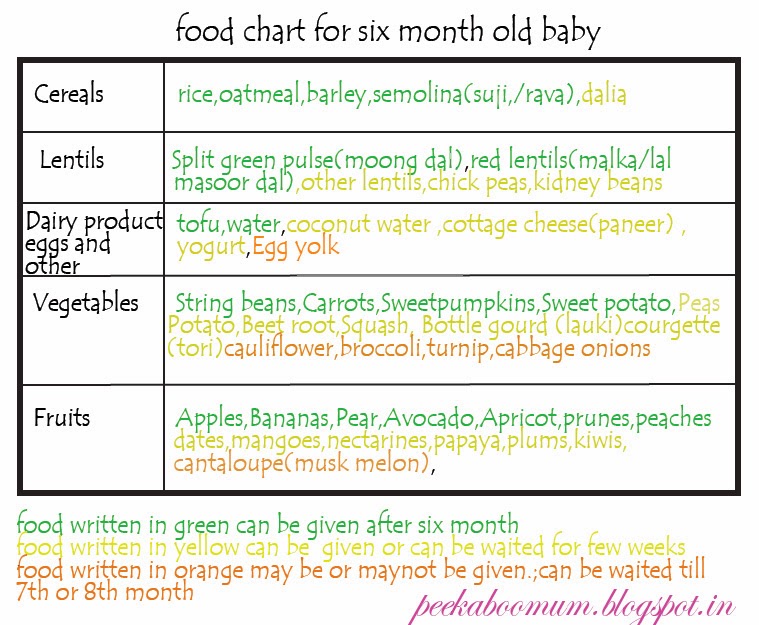 Milk porridge is diluted with water.
Milk porridge is diluted with water.
** - the daily volume of kefir or yogurt can be up to 200 ml,
*** - baby milk formula
Approximate diet of a 12-month-old child with an allergy to cow's milk proteins:
| breakfast 8 hours | Dairy-free porridge* Vegetable oil Fruit puree | 150-200 g approx. 1 tsp. 50 g |
| lunch 12 noon | Vegetable puree Vegetable oil Meat puree/meatball Bread/rust Compote | 180 g about 1/2 tsp. 50-70 g 10 g 50 ml |
| afternoon tea 4 pm | Breast milk or formula for infants with cow's milk protein intolerance Fruit puree Rusk | 150-180 ml |
| dinner 20 hours | Vegetables or dairy-free porridge** Vegetable oil Meat puree Fruit juice | 180 g about 1/2 tsp.  |


